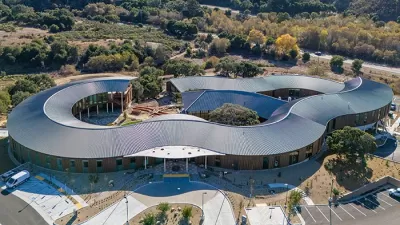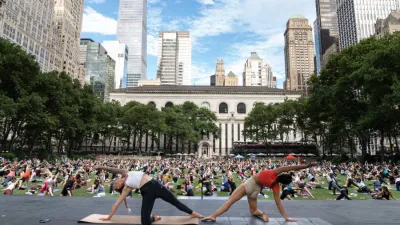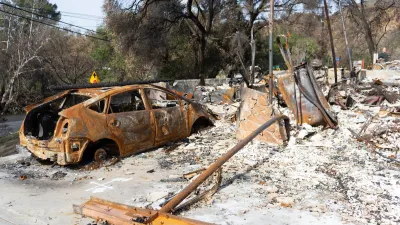A growing awareness of the link between the built environment and mental health has led some designers to examine the ways we can make housing feel more safe and welcoming for vulnerable populations.

In every aspect from transportation to housing, the COVID-19 pandemic laid bare massive inequalities in American society. While "[f]or many of us, the global lockdowns stemming from the COVID-19 pandemic have made our homes places of respite, healing, and renewal," writes Carl Winfield, many people with more complicated housing situations found themselves in even more dangerous positions. Meanwhile, housing conditions, particularly those found in shelters, can trigger difficult emotions for people who have experienced severe trauma.
"The growing awareness of the impact of the built environment on our health is one reason for the growth of trauma-informed design — design that includes adaptations to support a strengths-based framework based in an understanding of, and responsiveness to, the impact of trauma." According to Sandra Serna, vice-president health and housing at Stewards of Affordable Housing for the Future (SAHF), "[s]ubstandard housing — places that are overcrowded, dark, confining, poorly ventilated, or without access to social support — really highlight the negative impact poor-quality indoor environments can have on health." Now, experts are looking at ways to create spaces that "promote feelings of well-being and connection to the environment, that speak to the quality of life." While racial trauma manifests with many of the same symptoms as PTSD, "unlike PTSD, which is linked to a particular experience or series of experiences, racial trauma is marked by continuous direct and indirect exposure to race-based stress, which has a traumatic effect on society as a whole."
One example of a trauma-informed center is Denver's Arroyo Village, which uses trauma-informed design principles to create a safe, supportive space for clients. Shopworks Architecture, who designed the village, "began thinking about ways the built environment can be welcoming, feel safe, and help with the repair and healing of the brain and the prefrontal cortex." Their research led to considerations including the design of stairways to be more open and well-lit, the inclusion of green space and natural light, and other elements that "facilitate safety and belonging."
The work, says Serna, goes beyond just providing a safe, welcoming home for individuals. "The effort to connect residents and help form a larger, interrelated community beyond a particular development has led to the exploration of ways in which people can begin to address their trauma collectively and heal."
FULL STORY: What Is Trauma-Informed Design?

Study: Maui’s Plan to Convert Vacation Rentals to Long-Term Housing Could Cause Nearly $1 Billion Economic Loss
The plan would reduce visitor accommodation by 25,% resulting in 1,900 jobs lost.

North Texas Transit Leaders Tout Benefits of TOD for Growing Region
At a summit focused on transit-oriented development, policymakers discussed how North Texas’ expanded light rail system can serve as a tool for economic growth.

Why Should We Subsidize Public Transportation?
Many public transit agencies face financial stress due to rising costs, declining fare revenue, and declining subsidies. Transit advocates must provide a strong business case for increasing public transit funding.

How to Make US Trains Faster
Changes to boarding platforms and a switch to electric trains could improve U.S. passenger rail service without the added cost of high-speed rail.

Columbia’s Revitalized ‘Loop’ Is a Hub for Local Entrepreneurs
A focus on small businesses is helping a commercial corridor in Columbia, Missouri thrive.

Invasive Insect Threatens Minnesota’s Ash Forests
The Emerald Ash Borer is a rapidly spreading invasive pest threatening Minnesota’s ash trees, and homeowners are encouraged to plant diverse replacement species, avoid moving ash firewood, and monitor for signs of infestation.
Urban Design for Planners 1: Software Tools
This six-course series explores essential urban design concepts using open source software and equips planners with the tools they need to participate fully in the urban design process.
Planning for Universal Design
Learn the tools for implementing Universal Design in planning regulations.
City of Santa Clarita
Ascent Environmental
Institute for Housing and Urban Development Studies (IHS)
City of Grandview
Harvard GSD Executive Education
Toledo-Lucas County Plan Commissions
Salt Lake City
NYU Wagner Graduate School of Public Service





























